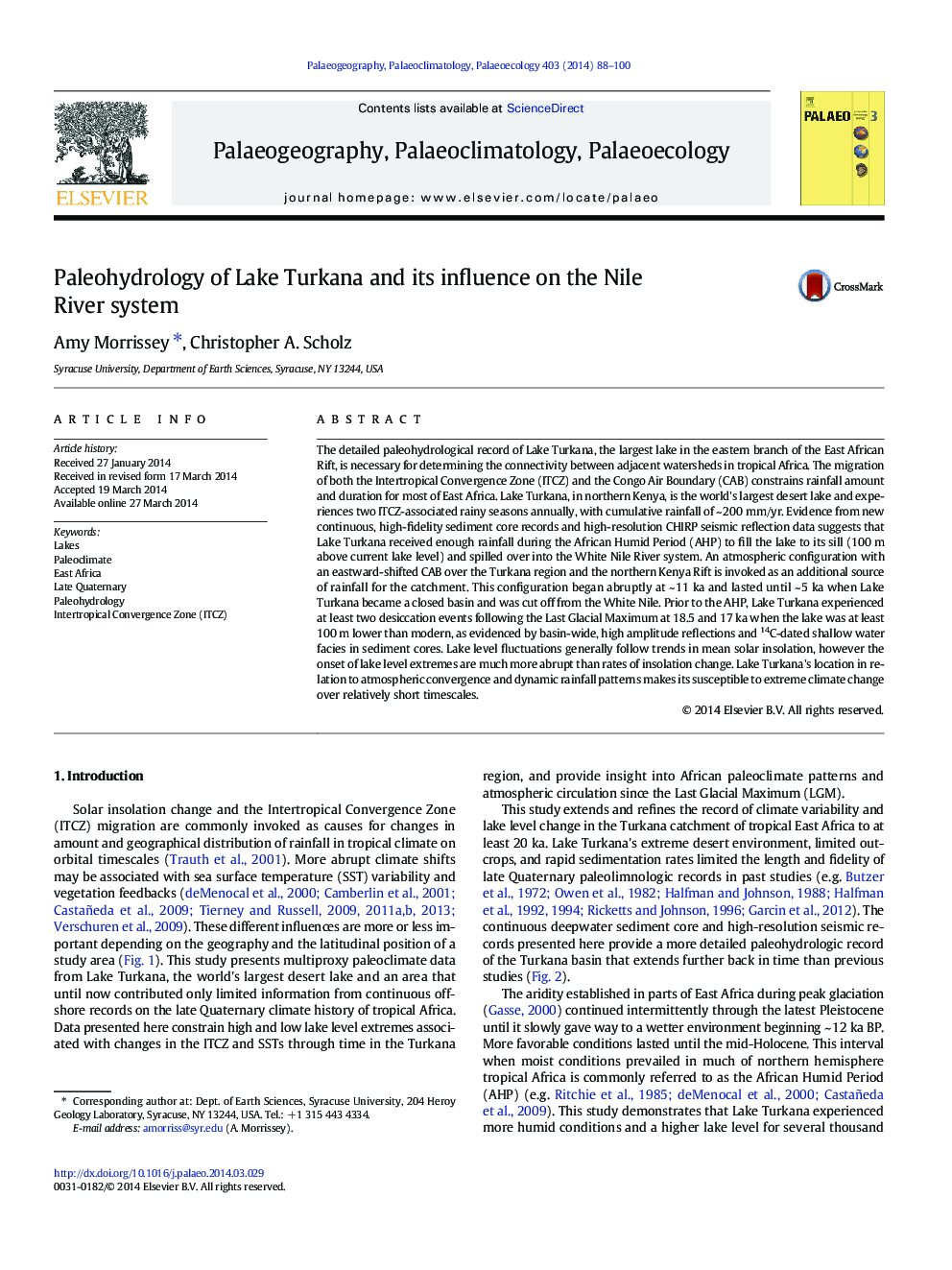| Article ID | Journal | Published Year | Pages | File Type |
|---|---|---|---|---|
| 4466241 | Palaeogeography, Palaeoclimatology, Palaeoecology | 2014 | 13 Pages |
•Sediment core analyses indicate Turkana lake level has varied by 200 m since 20 ka.•Turkana experienced desiccation at 18.5 and 17 ka, 120 m below current lake level.•Turkana experienced lowstands at 14 and 2.2 ka, 10's m below current lake level.•High lake level and an open connection to the White Nile occurred from ~ 12.5 to ~ 5 ka.•Turkana lake levels are consistent with intensification of monsoons during the AHP.
The detailed paleohydrological record of Lake Turkana, the largest lake in the eastern branch of the East African Rift, is necessary for determining the connectivity between adjacent watersheds in tropical Africa. The migration of both the Intertropical Convergence Zone (ITCZ) and the Congo Air Boundary (CAB) constrains rainfall amount and duration for most of East Africa. Lake Turkana, in northern Kenya, is the world's largest desert lake and experiences two ITCZ-associated rainy seasons annually, with cumulative rainfall of ~ 200 mm/yr. Evidence from new continuous, high-fidelity sediment core records and high-resolution CHIRP seismic reflection data suggests that Lake Turkana received enough rainfall during the African Humid Period (AHP) to fill the lake to its sill (100 m above current lake level) and spilled over into the White Nile River system. An atmospheric configuration with an eastward-shifted CAB over the Turkana region and the northern Kenya Rift is invoked as an additional source of rainfall for the catchment. This configuration began abruptly at ~ 11 ka and lasted until ~ 5 ka when Lake Turkana became a closed basin and was cut off from the White Nile. Prior to the AHP, Lake Turkana experienced at least two desiccation events following the Last Glacial Maximum at 18.5 and 17 ka when the lake was at least 100 m lower than modern, as evidenced by basin-wide, high amplitude reflections and 14C-dated shallow water facies in sediment cores. Lake level fluctuations generally follow trends in mean solar insolation, however the onset of lake level extremes are much more abrupt than rates of insolation change. Lake Turkana's location in relation to atmospheric convergence and dynamic rainfall patterns makes its susceptible to extreme climate change over relatively short timescales.
